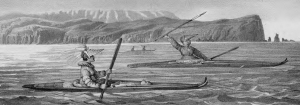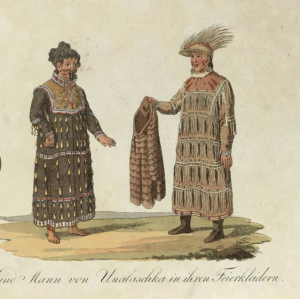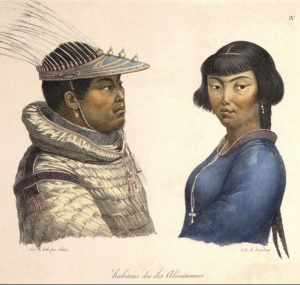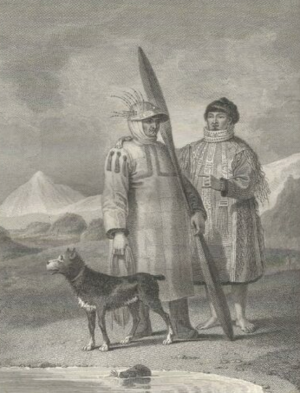MAPPING RACE THROUGH ARCTIC FISH SKIN ARTEFACTS
I had the wonderful opportunity of participating in theEmerging Scholars in Premodern Critical Race Studiesvirtual symposium, organized by the Newberry Library. This event showcased the research of emerging scholars working on race and race-making before 1800. The symposium was coordinated by Yasmine Hachimi, Dylan Bingham, Christopher Fletcher and beautifully chaired by Lia Markey, the director of the Center for Renaissance Studies who during the two-day event, contributed with invaluable insights to a vibrant cohort of scholars from around the world. This symposium beautifully demonstrated how libraries can actively engage with emerging academics, offering inspiration and support as they build their careers.
I presented my paper Mapping Race Through Indigenous Arctic FishSkin Artefacts:
Inuit and European contact was a slow and discontinuous process that transformed Alaska society over the last 450 years of interaction around gathering activity, inter-regional trade and social differentiation. Precontact Inuit and Yupik sites, with vast permafrost, contain artefacts manufactured by hunter-fisher-gatherers, such as gutskin and birdskin parkas, demonstrating their technological complexity and aesthetic achievements.
The arrival of the Russians in Southwest Alaska in 1741 significantly affected the Alutiiq Natives, exploited for fur labour while banned from hunting and processing commercial fur. Deprived of these, Native seamstresses turned to other traditional resources, such as fish and bird skins for clothing, disregarded by the Russians. The abundance of salmon in Alaskan rivers made fish skin a widely used 'fabric' for garments and accessories, reflecting their close affinity to nature.
Historical records provide information on fish skin artefacts collected by explorers and missionaries stored in distant natural history cabinets, symbolising cultural heritage loss. This paper unveils the role of these artefacts and the social activities around them reinforcing the Native’s identities in subsistence-based social structures. A conversation between pre-modern race studies and Arctic Indigenous studies highlighting the intertwined ecological, spiritual and material practices of Alaska Natives while addressing colonialism’ legacies.
https://www.youtube.com/watch?v=Hlc7Zn4a_lA&t=4043s
- DALL'ALTA MODA ALLA MODA ARTICA
- THE DEEP DIG UPENN MUSEUM
- MAPPING RACE THROUGH ARCTIC FISH SKIN ARTEFACTS
- ADORNMENTS FROM THE SEA
- AMUR RIVER FISH SKIN NATURAL DYES
- ARCTIC INUKSUIT STONES
- SPIRIT AND SKIN
- ART BIO MATTERS
- NORDIC FISH LEATHER DAY
- ARCTIC PRESERVATION & DIGITAL AGE
- INDIGENOUS KNOWLEDGE
- TRADITIONAL DYES FOR FISH LEATHER
- ICOM ICME 2023 FISH SKIN COLLECTIONS
- FISH WASTE FOR PROFIT
- FISHSKIN PATTERN-BASED GARMENTS
- A VIRTUAL AINU FISHSKIN WORKSHOP
- ARCTIC INDIGENOUS FISHSKIN
- SOCIETY OF LEATHER TECHNOLOGISTS
- COSTUME SOCIETY OF AMERICA
- IFFTI CONFERENCE 2020
- DESIGN MUSEUM CONFERENCE LONDON
- KYOTO SEIKA UNIVERSITY
- CRAFT CONFERENCE ESTONIA
- CUMULUS ROVANIEMI 2019
- MILANO DESIGN WEEK
- SIMON FRASER UNIVERSITY VANCOUVER
- BRITISH COUNCIL CRAFTING FUTURES
- EU INDUSTRY DAYS BRUSSELS
- LINEAPELLE INNOVATION TALKS
- EUROPEAN LEAGUE OF THE INSTITUTES OF THE ARTS
- DWEEK BILBAO AND BRITISH COUNCIL
- BRITISH ASSOCIATION FOR JAPANESE STUDIES
- TRANSBOUNDARY FASHION SEMINAR



